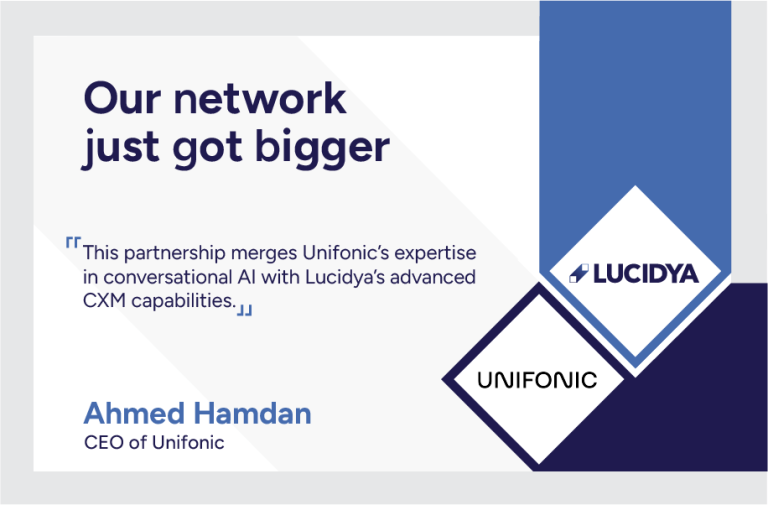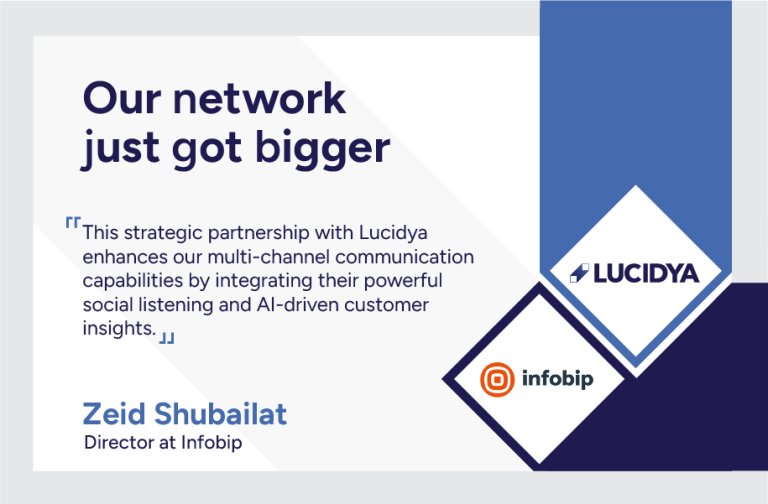
Minimizing Customer Churn: How CX Teams Can Catch it Before it Happens
Every good customer experience strategist knows that what you see on the surface, whether it’s rising sales, metrics ticking upwards, or glowing reviews, rarely tells the whole story. What matters happens in the background: the unspoken expectations, the quiet frustrations, and the subtle signs that keep customers loyal—or send them walking away.
Customer trust isn’t built on grand gestures or flashy campaigns. It’s earned in the quiet, everyday interactions between follow-ups, transparency, and constant listening. Fail to nurture those, and by the time you spot trouble in your metrics, the damage is already done, and your most loyal customers are halfway out the door.
The problem is, we’re so focused on the visible wins that we miss the cracks that form out of sight and erode trust until it’s too late to fix.
The patterns of customer divorce
When a relationship with your customer ends, you might blame the last thing that went wrong—that final negative experience, missed opportunity, or a competitor’s enticing offer. But more often than not, the warning signs were there, unnoticed, for months.
This is the reality that PwC exposed in its 2024 trust survey: while we’ve mastered the art of measuring surface health, we’ve largely failed to develop true measures of what’s happening at the roots. We track satisfaction when we should be measuring trust. We track engagement when we should be monitoring relationship depth.
And it stings, doesn’t it? That dreaded phrase: “We’ve decided to go in another direction.” Or worse, the silence.
When major accounts slip away without a word, the financial toll can be staggering, and teams are left scratching their heads, wondering what they missed and how they could have prevented the escape.
The most painful part? The customer likely did try to communicate their dissatisfaction. Not outright, but through countless subtle cues that existing tools weren’t built to pick up.
While 93% of companies have thoughtfully built robust survey programs to listen to their customers’ feedback, these traditional check-ins only capture what customers consciously share. Perhaps this explains why 85% of executives admit their feedback tools fail to deliver actionable insights. They’re missing the deeper narrative hidden in customer behaviors, communication patterns, and engagement shifts.
Surveys do something vital: they create a direct line to hear what customers want to tell us. But some of the most important signals never make it into a survey response. However, when you combine what customers tell you directly with intelligent analysis of these everyday signals, your team can notice when a relationship starts to cool long before it freezes over.
Without this comprehensive view, organizations find themselves drowning in delayed feedback, fragmented data, and a jumble of tools that keep them perpetually a step behind their customers’ evolving needs. No wonder CX teams keep putting out fires they could have avoided.
The consequences cascade through every level of decision-making: not only do businesses collect data that lacks predictive power, but they also build strategic frameworks around these limited insights. The real tragedy isn’t just in the tools’ inadequacy, but in how this approach fundamentally misunderstands the nature of customer relationships.
The reality is, the “last straw” is rarely the real reason for a customer’s departure. It’s even safe to say that the status quo is no longer cutting it.
Why did they stop caring?
The modern customer journey isn’t linear. It is made of thousands of micro-moments, each one a chance to either strengthen or strain the bond between company and customer. In other words, your customers’ attention and loyalty hang by increasingly delicate threads. One tone-deaf email is all it takes to turn your most loyal brand lover into your fastest unsubscriber.
Take these everyday moments of disconnect:
- When a customer searches for your product at midnight and finds your chatbot can’t handle nuanced questions, the thread starts breaking.
- When a customer sees your competitors’ virtual assistants having real conversations about product features and specs, while your brand’s site just has a FAQ page (or a chatbot that only knows five answers), another thread snaps.
- When a customer is forced to repeat the same issue multiple times, and it takes too long for your team to identify and address it, even the strongest threads risk completely unraveling.
Each misalignment reinforces a growing suspicion: this brand doesn’t understand my world.
The thread usually breaks completely when:
- Their TikTok-trained attention span, conditioned for 15-second dopamine hits, meets your lengthy 2,000-word email with nothing in it for them.
- Their Instagram feed, precisely curated to their aesthetic dreams, crashes into your generic “Dear Valued Customer” communications.
- Their Uber-trained expectation of real-time updates and transparent pricing smashes against your “We’ll be there sometime between 9 AM and never” service window.
Breaking the breakup pattern
Lucidya envisions organizations building such deep connections with their customers that the thought of leaving never crosses their minds. It’s about moving beyond reactive measures to create experiences that naturally inspire loyalty.
While others scramble to catch their customers on the way out, we believe in something bolder: seeing the signs before they appear. Your customer experiences shouldn’t be at the mercy of chance or change. They should be shaped by insight, nurtured by foresight, and strengthened through precise and timely action.
What does this mean for your customer experience strategy?
Simply put, it’s moving from reacting to predicting to prescribing how to interact with customers. While prediction illuminates potential outcomes, prescription sets out the way to get the best results. Leading organizations have gone beyond basic predictive modeling to develop comprehensive systems that spot not just risk factors, but the exact moments of opportunity. These systems do more than alert you that your customer might leave; they give insights into when they’re eyeing the exit, why they’re reaching for the door handle, and exactly how to remind them why they chose you in the first place.
From a more technical perspective, that means recognizing organic growth opportunities, understanding optimal timing for new initiatives, and orchestrating perfectly timed interventions through ideal channels. It’s a shift from merely observing your dashboards to proactively mapping out a positive customer experience strategy.
Because in the end, it’s not about preventing breakups; it’s about building relationships so strong they never need couples therapy.
Having tools does not mean having insight
Think you can unlock predictive—or even better, prescriptive—power over your customer experience by assembling a shiny stack of tools? Not quite, though we admire your enthusiasm.
While having the right tools gives you a stage to perform on, achieving a full view of your customer experience and extracting actionable insights only happens when you shift your mindset from chasing technology to mastering operational efficiency. After all, even the most sophisticated telescope still needs someone who knows where to point it.
That said, we understand that most companies aren’t starting from scratch—and shouldn’t have to. Dismissing current efforts as inherently “wrong” isn’t the answer. Many already have plenty of tools in place to manage their customer experience. Dashboards, surveys, analytics platforms, CRM systems, you name it. Each promises valuable insights, yet collectively they create more ambiguity than clarity for the work team. And truth be told, this fragmented approach can lead to a costly strategic mistake.
The good news is that marketing leaders are becoming more vocal about this issue. Gartner’s latest CMO Spend survey suggests that there’s an important gap in organizations’ understanding of their customers and how they manage their experience.
What we suggest at Lucidya is tracking the natural flow of customer behavior over time, rather than just looking at isolated moments. Our experience with clients has shown some remarkable results. When organizations bring together all their customer data in one place, using smart analytics to spot patterns, they consistently see transformative outcomes in how their customers engage with them. Looking at the data, they have been able to achieve up to 238% improvement in positive sentiment while reducing negative sentiment by 89%. But what really validates this unified approach is seeing their teams become 900% more effective at addressing customer inquiries.
These results aren’t luck or exceptions. They are the natural outcome of having a 360-degree view of your customers’ experience and making sure the right people in your team get the right insights at the right time.
Here’s a practical example: A software company noticed they were losing subscribers despite high satisfaction scores. By analyzing customer behavior across channels through a unified system that connects and interprets all customer data, they discovered that customers who didn’t use certain key features within the first 30 days were 3x more likely to cancel within six months. This insight led them to create targeted onboarding experiences for different user types, reducing churn by 40%.
The point isn’t that your existing CX tools are useless—they’re essential. But they’re like having a kitchen full of professional equipment. Just owning great knives and pans doesn’t make you a chef. It’s understanding how ingredients work together, timing your preparations perfectly, and knowing how to adjust recipes for different tastes that creates an outstanding meal.
Your tools need a brain
Most customer experience tools are like overeager assistants who dump piles of data on your desk and call it “insights.”
“Here’s a tweet! A ticket! A survey! A trend! Good luck!”
All of this is great, but where do you even start? The more data your tools pile on, the harder it becomes to spot the patterns that actually deserve your attention. Your team ends up either chasing every alert (goodbye, productivity) or becoming numb to them all (hello, missed opportunities).
If your customer experience tools were a nervous system, they’d be all neurons and no cerebral cortex—lots of signals, but no higher-level processing. While signals are invaluable, they need a central intelligence to transform their chatter into meaningful conversations and purposeful actions.
Humanizing data and enabling intuition
Lucidya does not seek to fully automate your customer support engine or replace your team’s intuition. The highest purpose of our technology is not to replace human judgment, but rather deepen it. We strive to illuminate it and show you and your team where to look to get clear and actionable insights to improve your customer experience strategy.
By fusing social chatter with customer support histories, we turn fragmented interactions into Customer Truth Profiles that reveal:
- The silent escalators: The CEO who tweeted a vague “disappointed” comment after their team filed 3 unresolved tickets about your API.
- The hidden influencers: A client whose LinkedIn rant about your onboarding process unexpectedly inspired 50+ “Me too” replies.
- The quiet exits: Customers who stopped engaging with your emails and went radio silent on support but haven’t officially churned… yet.
These profiles are meant to be storylines your team can finally read before the plot twist hits.
Insights are worthless without action plans
Once you know where to look, you can act with confidence and precision to avoid churn, mitigate any risk that is starting to surface, and repair customer relationships before they’re broken beyond recovery. When you act on insights—not just collect them—you build something no competitor can replicate: a bond that feels human, even when powered by technology.
Your customers won’t just stay. They’ll choose you, talk about you, and forgive your missteps because they know you’re listening.
From here, you have two options:
Option A – pursue the complex and time-consuming path that requires your teams to keep guessing where to look and how to act. Manually monitor multiple systems, correlate scattered data, and coordinate responses across departments, all while hoping your team connects the dots before a crisis hits; or
Option B – deploy a unified AI-powered CXM platform to cut through this complexity, dissolve operational headaches, know exactly where to look for insights.
The difference is dramatic. Instead of your team spending hours collating data from different sources to spot patterns, they can focus on what humans do best: delivering high-touch, nuanced customer interactions that require emotional intelligence and creative problem-solving.
Let’s tie it all together: The mission isn’t to replace your existing tools. It’s to make them work together intelligently. Just as our brains take inputs from all our senses to understand what’s happening around us, your customer experience platform should unify all your customer signals to give you true predictive power and build a foundation where customer relationships naturally deepen instead of drift.
The best time to save a customer’s trust was yesterday. The next best time is now. See how our unified AI-powered CXM platform helps you spot customer churn before it happens, not after they’re gone. Book your personalized demo now!









